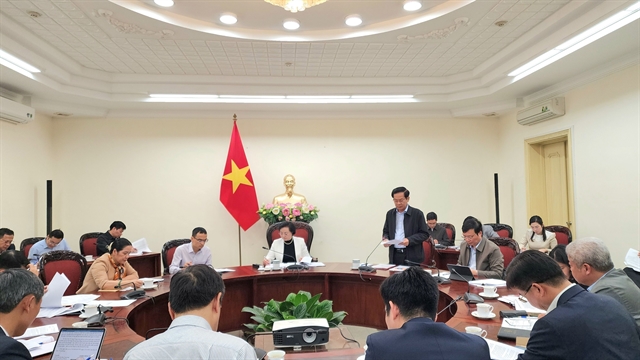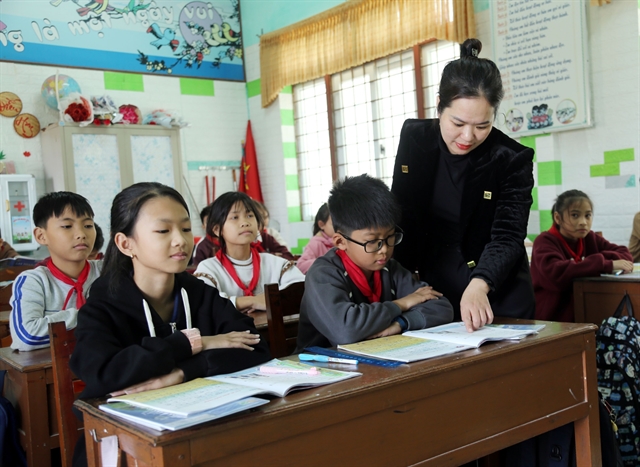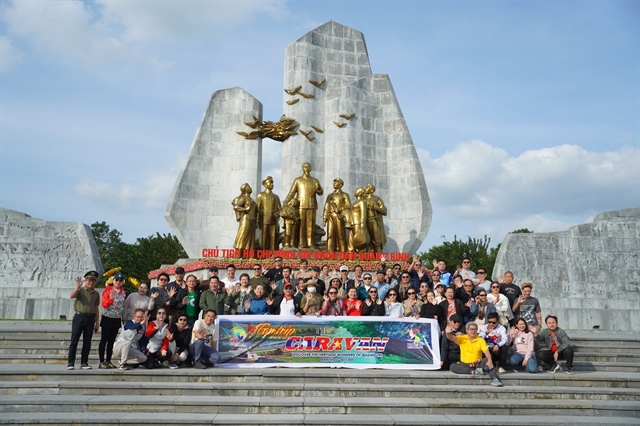 Life & Style
Life & Style

" />Developing ways to attract more Chinese and Malaysian tourists to Việt Nam was the main topic of discussion at several seminars held in HCM City within the framework of the three-day International Travel Expo (ITE) HCM City 2017, which ends today (September 9).
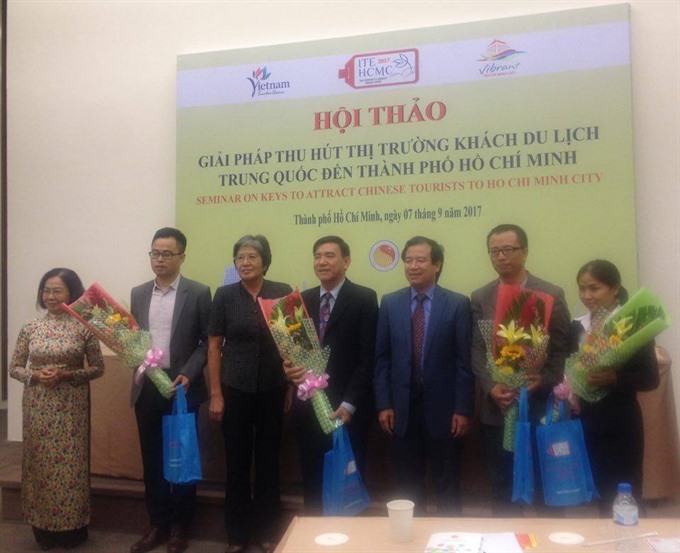 |
| Participants at a seminar on the ways to attract more Chinese tourists to HCM City organised in the city on September 7. — VNS Photo Ngọc Diệp |
HCM CITY — Developing ways to attract more Chinese and Malaysian tourists to Việt Nam was the main topic of discussion at several seminars held in HCM City within the framework of the three-day International Travel Expo (ITE) HCM City 2017, which ends today.
Participants discussed the city’s key tourism products for Chinese and Malaysian tourists and the ways inbound travel companies could strengthen connections in the city.
Over the last few years, the Malaysian market has been one of the top 10 Asian tourist markets for Việt Nam.
At a seminar held at the Saigon Exhibition and Convention Centre (SECC) on Friday, Đinh Ngọc Đức, the director of the market department under the Việt Nam National Administration of Tourism, said the city should consider opening more airline routes between Malaysia and Việt Nam, create new, interesting tours, and open more Malaysian restaurants.
In the first eight months of the year, about 295,500 Malaysian tourists visited the city, an increase of about 17 per cent compared to the same period last year, a gain of nearly 3.5 per cent of Việt Nam’s total international arrivals.
Abdul Hadi Che Man, director of Malaysia’s Travel Promotion Department based in the city, said the city’s tourism sector should pay more attention to Halal tourism, including foods and drinks, cultural activities and accommodations.
He said the city’s tourism should offer more conveniences for Malaysian guests such as prayer rooms at international airports, Halal restaurants at hotels and shopping malls, and tour packages inclusive of Halal meals.
“I hope the city will step by step improve and apply these solutions, and ensure that services for Malaysian tourists are offered in the near future,” he said.
Zosimo Jimeno, general director of Kok Thai (Quốc Thái) Travel, said between 3.5 and 4.5 per cent of the total international tourists to Việt Nam are Malaysian. “I believe the number of Malaysian tourists to Việt Nam will increase year by year,” he said.
Malaysia is diverse and has many kinds of tourists, he said, adding that businesses and services must know what to do and what to avoid, especially in communications and operations.
“There are many components in tourism and hospitality, but the traveler will only see it as one single experience,” he said.
Tourism companies should also offer promotions on Malaysia’s national holidays, he added.
Chinese market
Another tourism seminar held on Thursday which focused on ways to attract Chinese tourists attracted more than 120 people, including representatives from Việt Nam National Tourism Administration and the city’s tourism associations and Department of Tourism, and officials of airlines, tourism businesses, schools, restaurants, hotels and relevant agencies.
Zhang Hailin, a professor at Guilin Tourism University’s Asian Tourism Research Centre, spoke about China’s tourism and outbound markets, and the role of the Chinese market in Việt Nam’s tourism.
China is the largest outbound tourism source market for the world and the number one spender in international tourism, according to the United Nations World Travel Organisation.
“Ten per cent of Chinese own a passport, and 62 countries and territories give free visa on arrival for Chinese passport holders, so there is growing potential for the Chinese outbound market,” he said.
Around 2.7 million Chinese tourists visited Việt Nam in the first eight months of the year, an increase of 51.4 per cent compared to the same period last year, accounting for 31.3 per cent of Việt Nam’s total international visitors.
The World Tourism Organization (UNWTO) has reported that Việt Nam leads Asia in tourism growth rate.
Early this year, Việt Nam ranked sixth among the top 10 countries with the most powerful tourism growth in the world, according to the Việt Nam National Administration of Tourism.
At the seminar, Xie Yuanbo from Guilin Tourism University discussed Chinese tourists’ characteristics and offered recommendations on how to promote Việt Nam tourism to the Chinese market, such as improving advertisements, applying new payment systems, and promoting local Chinese-speaking staff.
Phan Xuân Anh, CEO for Việt Excursions (Du Ngoạn Việt), suggested that the tourism sector focus on operating high-quality tours with sustainable prices instead of a large number of poor-quality tours.
He recommended that the city tourism sector invest in building luxury shopping centres to sell jewelry, pearls, aloe wood, and products made with natural rubber, and build areas for luxury seafood dining.
Nguyễn Thị Bích Thủy, inbound director for Vietravel, said that city authorities should include the Chinese language on traffic signs and write a tourism code of conduct in Chinese.
TPO-business networking workshop
Twelve member cities of the Tourism Promotion Organisation for Asia Pacific Cities (TPO) participated in a business networking workshop held yesterday (September 8) within the framework of the 13th International Travel Expo HCM City.
The aim of the event was to promote tourism products and services between HCM City and 11 cities in South Korea: Busan, Jeonju, Haeundae, Tongyeong, Andong, Gimhae, Incheon, Ulju-gun, Goyang, Jeollabuk-do, and Geoje.
Lã Quốc Khánh, deputy director of HCM City’s Tourism Department, said HCM City, as one of TPO’s founding members, had always supported the TPO’s activities.
“This is a good opportunity for travel agents from TPO and Việt Nam to exchange information to open up future cooperation,” Khánh said.
The South Korea-based organisation has more than 100 members, including city governments, NGOs and businesses across the Asia Pacific region, offering a network for tourism exchange and co-operation. — VNS
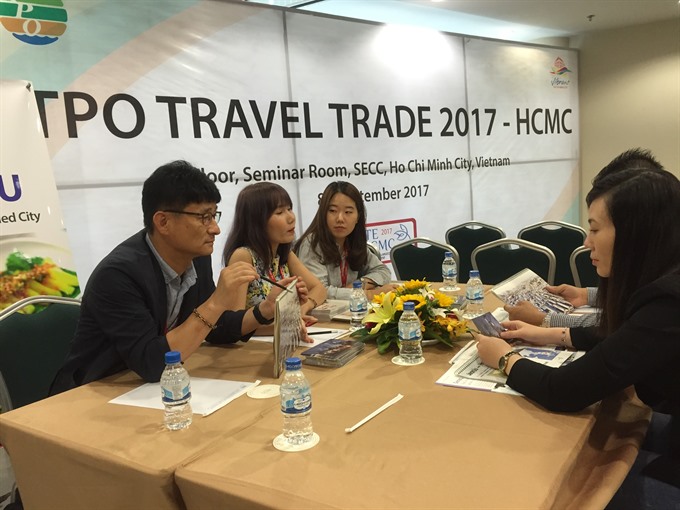 |
| Representatives from member cities of the Tourism Promotion Organisation for Asia Pacific Cities (TPO) participate a business networking workshop held on September 8 within the framework of the 13th International Travel Expo HCM City. — VNS Photo Thu Hằng |

